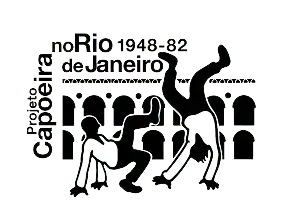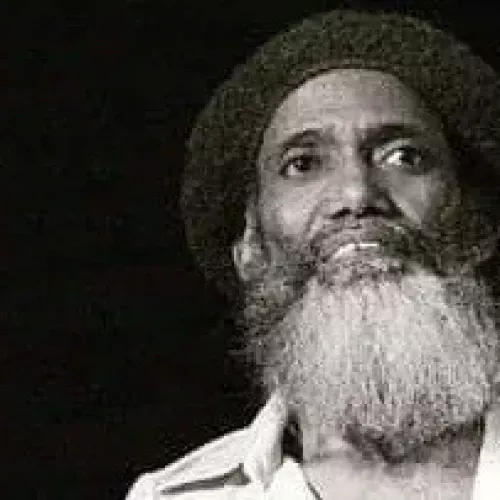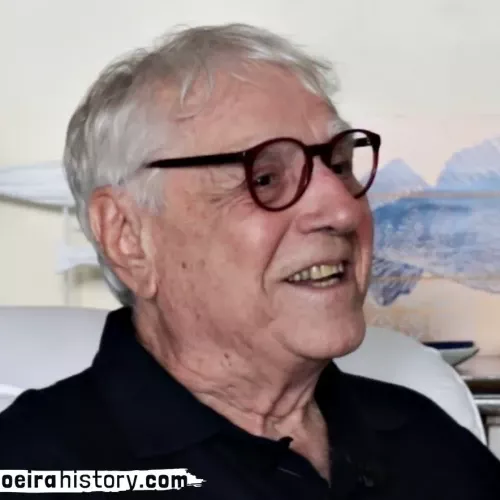Before learning capoeira, Master Travassos knew samba duro, or samba de pernada, which impressed the then teenager Victor Widawski.
Jorge Columá, Jaqueline Ribeiro and Rômulo Reis
All capoeira lovers must have heard of the respect due to capoeira masters, for the ancestry and the traditions that go with our art.To this end, the main means of communication connecting these traditions of the older generation to new practitioners is oral culture, which transmits teachings, showing different ways of doing, being and understanding, translating what cannot be taught directly – but can be learned.
Thus, oral culture necessarily depends on memory, experience and feelings, which are passed on to each new generation. We invite you to read the story of Mestre Travassos, the pioneer of capoeira teaching in the cities of Niterói and São Gonçalo, Rio de Janeiro State.
Born in Bahia, on the 7th September 1942, Victor Widawski (Master Travassos) was one of the many people from Northeast Brazil who migrated to the Southeast of the country in search of new opportunities. His family arrived in the city of Rio de Janeiro around 1945, where he had a poor and modest childhood.
Later Travassos experienced the first steps of capoeira in the Flamengo neighbourhood, with a boy known as Baianinho. Some time later, in 1960, he started to train with Antônio Nascimento de Morais, who, according to himself, had been a pupil of Master Pastinha. During his youth, Master Travassos attended the São Clemente Samba School, also based in Botafogo, where he experienced the peak of the combination of samba and capoeira. On this occasion, the master was responsible for an exclusive wing of samba duro, a modality in which two sambistas (capoeiras) faced each other in a duel of samba, handclapping, improvisation, rasteiras and pernadas [sweeping kicks to take down the adversary].
At that time, living solely from capoeira was something distant from reality, and so Master Travassos had to chose other paths which led him to enrol in the Military Police of the State of Rio de Janeiro – PMERJ. When he joined the Military Police and he moved from Rio de Janeiro to Niterói, new horizons opened up as he was given the opportunity to teach capoeira classes in his battalion.
Thus, the master started to dedicate himself to the teaching of classes in the police station and also in two other places, one in Niterói and the other in São Gonçalo. The space for the classes in Niterói was in the Barreto neighbourhood, in a modest house, where the premises in the back were used by a Spiritist centre of the Umbanda religion.
In the 1970s, capoeira was undergoing a process of institutionalization, and was even reaching universities. As a Brazilian art and fight, capoeira was part of the Brazilian Boxing Confederation (Confederação Brasileira de Pugilismo – CBP), which had as its affiliate the Rio de Janeiro State Boxing Federation (Federação de Pugilismo do Estado do Rio de Janeiro – FPERJ).
At the FPERJ, Master Travassos was Capoeira Advisor to the board, and took part in state and national capoeira competitions as a referee and as a one of the directors of the Federation.
Photo by Master Travassos, from the Jorge Columá collection.
In parallel, the master wrote his own history with capoeira, giving classes, graduating disciples, organising and participating in events such as symposiums, lectures, batizados, shows, and open discussions.

His trajectory had a high point in the late 1970s, with the creation and inauguration of the capoeira association Pequenos Mestres. In his association, technique and style were prioritised, and were different from both Capoeira Angola and Capoeira Regional.
In other words, Master Travassos had his own style of playing capoeira. Through the work of the association Pequenos Mestres, which exists until today, Master Travassos trained generations of masters, such as Master Chita (in memorian), Bocka, Bailarino, Jacaré, Casquinha, Santana, Ricardo Feijão, and others.
In the 1980s, together with masters Bocka, Martins and Bogado, Master Travassos founded the Capoeira Federation of the State of Rio de Janeiro – FCERJ (1984). In the 1990s, he actively participated in the foundation of the Capoeira Sports Federation of the State of Rio de Janeiro – FDCRJ.
Still in this decade, in 1998, after actively working for capoeira for more than 30 years, Master Travassos received his last graduation, the white cordel.
Today, Master Travassos, 78 years old, even though he no longer teaches capoeira, is still an active figure in events when invited. His pioneering spirit is widely recognised and he is responsible for many achievements for capoeira in the area, his work living on through his many disciples.
Jorge Felipe Columá is a Capoeira master and PhD in Physical Education.
Jaqueline Ribeiro is a Sports and Physical Education teacher.
Rômulo Reis is a Capoeira contramestre and PhD in Physical Education.





